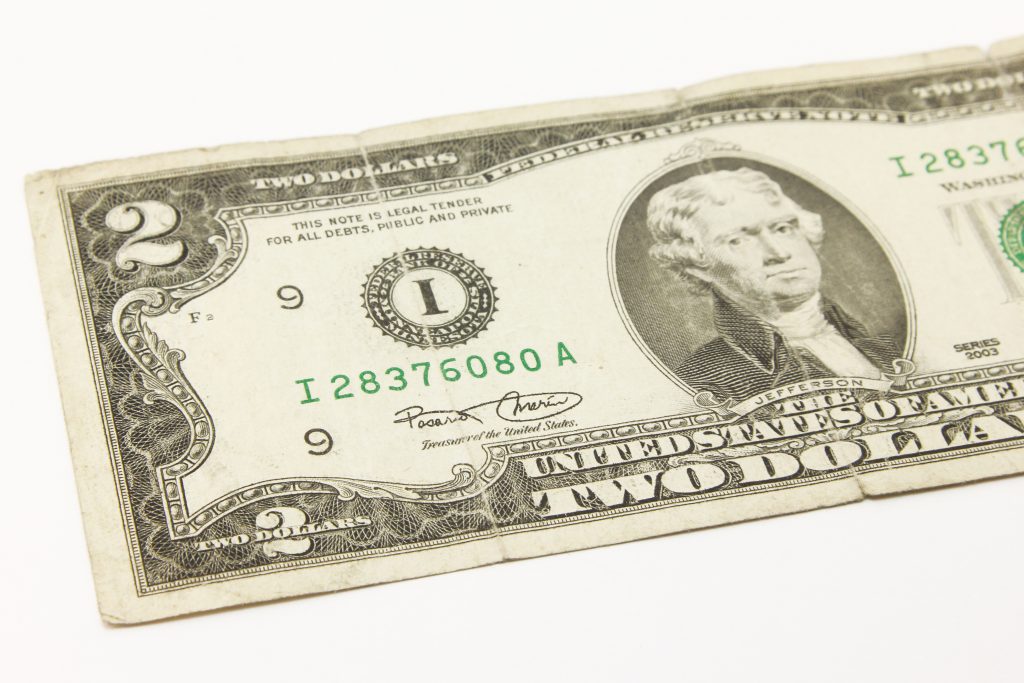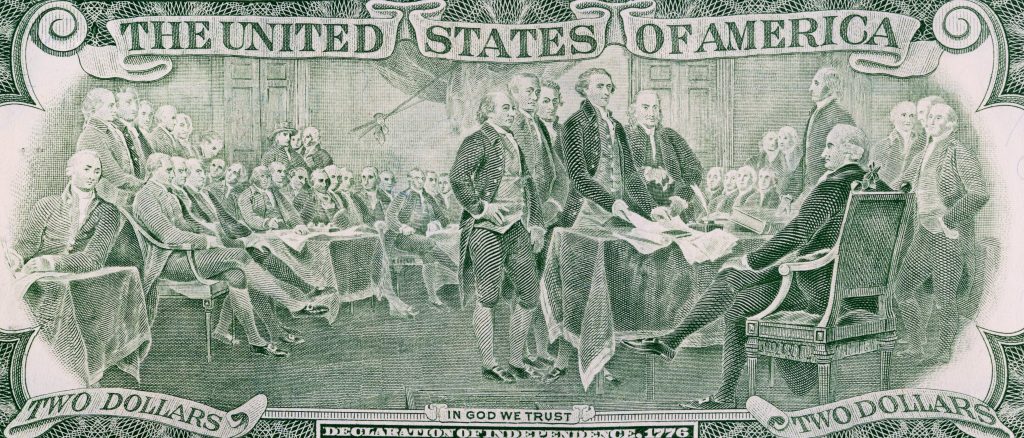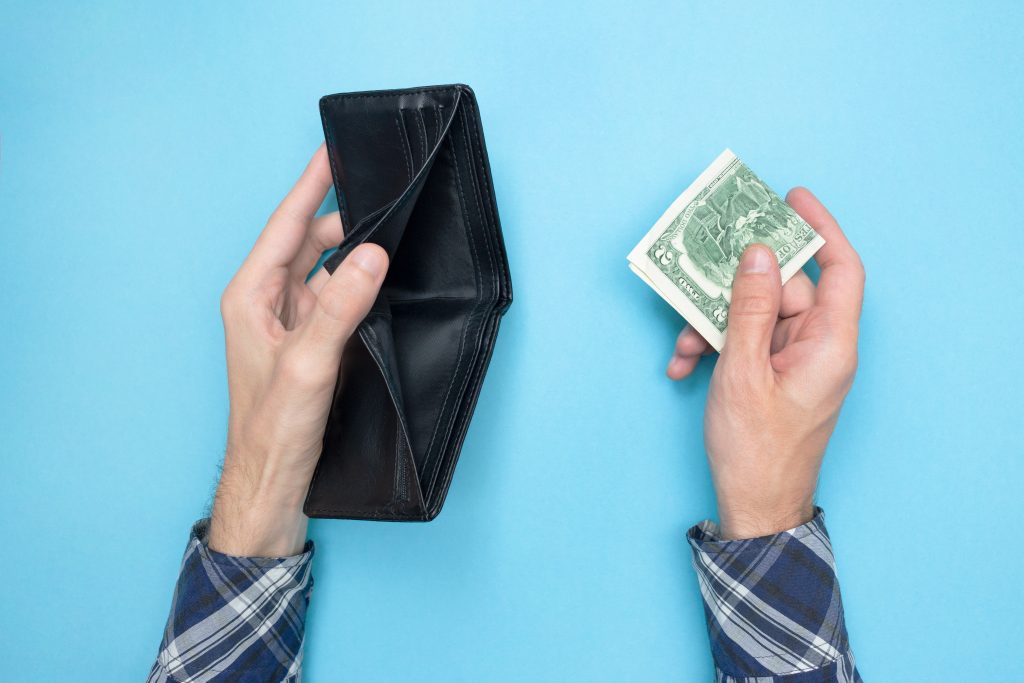If you’re over the age of 40, there’s a good chance that at some point in your childhood an older relative slipped you $2 bill. Throughout their history, these bills were never widely accepted by the public or used consistently.
But have you ever wondered what that $2 bill is worth now? Because this paper currency is no longer in production, some bills are cashing in at much higher values than you might expect.

History Of The $2 Bill’s Value
Apparently, receiving a $2 bill in the 1920s was considered a jinx — so much so that gambling establishments, such as casinos and racetracks forbade them from being paid out.
Later on, their negative association dissolved, and some American factories purposely paid their employees in $2 bills so they could be used locally. This was done with the hope to demonstrate the importance of the industry to local vendors.
The Department of the Treasury revived the $2 bill for the United States Bicentennial in 1976. The face remained the same, but the back was redesigned to have a vignette of the Declaration of Independence inspired by the famous John Trumbull painting.

Understanding The $2 Bill’s Current Worth
Rarity and demand dictate the value of this special bill. They account for less than .0001% of all currency in circulation, which makes them look — on paper — super rare, but that’s not actually the case for all $2 bills.
Circulated banknotes have been used by the general public and often appear worn and dirty. On the other hand, uncirculated bank notes can appear in mint condition.
Generally speaking, a $2 bill is typically worth $2 if it was produced between 1976 and 2013. Even an uncirculated $2 bill won’t be worth more than face value if it was printed after 1976. However, most $2 bills were created between 1862 and 1918, and these are highly collectible, fetching at least $50 in well-circulated condition. However, if you have one that’s in mint condition that was produced during this time, it might be worth $500 or more. Some uncirculated varieties are valued at more than $1,000.
To get a rough idea of its value, compare your bill’s year to the U.S. Currency auction’s list. Look for any special printings, seal colors and serial numbers. Newer bills contain a green seal while the earliest bills contain red and brown seals.

Don’t Spend It Just Yet
Even if your $2 bill isn’t worth more than a couple bucks, that doesn’t mean you should spend it — and that’s not because it hasn’t increased in value. It’s because people are still suspicious of them. A film called “The Two Dollar Bill Documentary“ mentions several incidents of workers thinking they’re being scammed and calling the police on customers attempting to use them.
Also, even if it’s worth more on the collectibles market, it’s still only worth $2 if you spend it at a store. That is if the establishment even lets you pay with it!
Because most people think the $2 bill is worth more than face value, many people have tucked them away in a safe spot over the years. This means there’s a large supply of well-preserved bills out there. Do you have one? Check to see what year it was printed. It might be worth much more than you think!
This story originally appeared on Don't Waste Your Money. Checkout Don't Waste Your Money for product reviews and other great ideas to save and make money.


